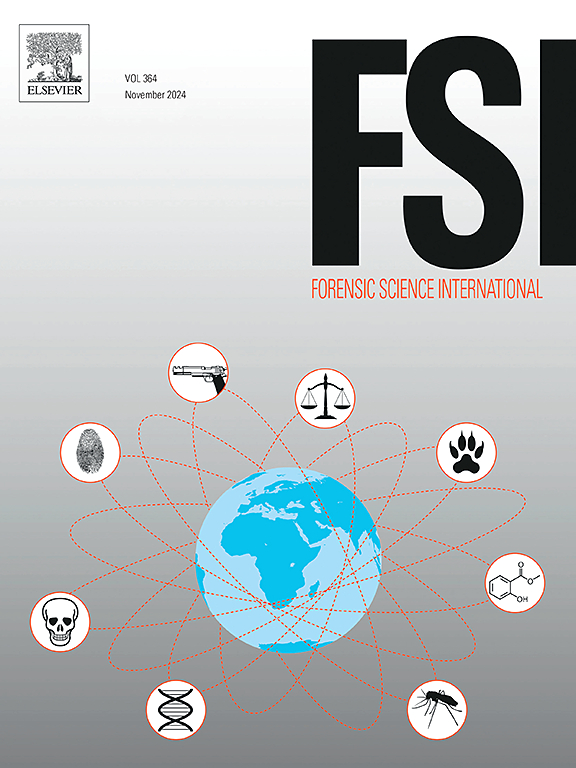Cardiothoracic injuries and mechanical cardiopulmonary resuscitation – A forensic autopsy convenience control study on 436 cases
IF 2.5
3区 医学
Q1 MEDICINE, LEGAL
引用次数: 0
Abstract
This study documents the types and frequencies of injuries related to chest compressions during resuscitation attempts in a cohort of 436 non-traumatic, forensic autopsy cases from Eastern Denmark. We hypothesized that there would be a difference in types and frequencies of injuries seen after mechanical cardiopulmonary resuscitation (mCPR) compared to manual basic life support (BLS). We included all non-traumatic deaths referred for a forensic autopsy in eastern Denmark in the period 2015–2017, for a total of 436 cases (females, n = 146; males, n = 290), of which 75 cases had mCPR performed. Data on injuries were obtained from forensic autopsy reports. The mCPR group was characterized by a statistically significantly higher incidence of myocardial rupture (4 % vs. 0 %, p < 0.0001). We found no other statistically significant differences in the incidence of visceral trauma (e.g. haemothorax, pericardial haemorrhage, pulmonary contusions, liver or spleen injuries) between the two groups. In addition, characteristic injuries recorded in both groups included a high frequency of multiple rib fractures in the upper and middle parts of the rib cage, primarily located anteriorly, as well as sternum fractures, but these findings occurred almost twice as much in the mCPR group (77.3 % vs. 46.8 %, p < 0.0001).
心胸损伤与机械心肺复苏术 - 436 例法医尸检方便对照研究
本研究记录了来自丹麦东部的436例非创伤性法医尸检病例在复苏过程中与胸部按压相关的损伤类型和频率。我们假设机械心肺复苏(mCPR)与手动基本生命支持(BLS)相比,在损伤类型和频率上存在差异。我们纳入了2015-2017年期间丹麦东部提交法医尸检的所有非创伤性死亡病例,共436例(女性,n = 146;男性,n = 290),其中75例行mCPR。受伤数据来自法医尸检报告。mCPR组心肌破裂发生率显著高于对照组(4 % vs. 0 %,p <; 0.0001)。我们发现两组在内脏创伤(如血胸、心包出血、肺挫伤、肝或脾损伤)发生率方面没有其他统计学上的显著差异。此外,两组记录的特征性损伤包括胸腔上部和中部多发肋骨骨折的频率较高,主要位于前部,以及胸骨骨折,但这些发现在mCPR组发生的频率几乎是mCPR组的两倍(77.3% %对46.8% %,p <; 0.0001)。
本文章由计算机程序翻译,如有差异,请以英文原文为准。
求助全文
约1分钟内获得全文
求助全文
来源期刊

Forensic science international
医学-医学:法
CiteScore
5.00
自引率
9.10%
发文量
285
审稿时长
49 days
期刊介绍:
Forensic Science International is the flagship journal in the prestigious Forensic Science International family, publishing the most innovative, cutting-edge, and influential contributions across the forensic sciences. Fields include: forensic pathology and histochemistry, chemistry, biochemistry and toxicology, biology, serology, odontology, psychiatry, anthropology, digital forensics, the physical sciences, firearms, and document examination, as well as investigations of value to public health in its broadest sense, and the important marginal area where science and medicine interact with the law.
The journal publishes:
Case Reports
Commentaries
Letters to the Editor
Original Research Papers (Regular Papers)
Rapid Communications
Review Articles
Technical Notes.
 求助内容:
求助内容: 应助结果提醒方式:
应助结果提醒方式:


